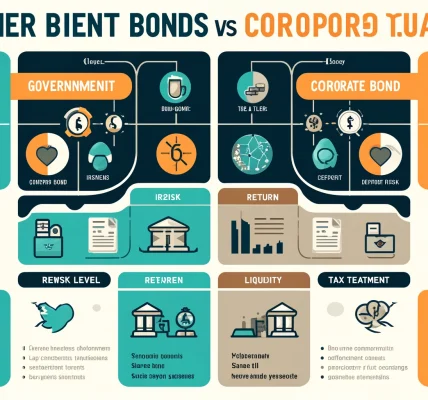As global awareness of climate change and environmental challenges continues to grow, investors are increasingly seeking opportunities that align their portfolios with sustainable development goals. One such investment vehicle gaining traction is green bonds. These financial instruments allow investors to support environmentally beneficial projects while earning returns, combining the best of sustainable investing and fixed-income securities.
In this blog, we will explore what green bonds are, how they work, their benefits and risks, and whether they are a suitable option for your portfolio. We’ll also examine how investing in green bonds can help mitigate climate change and promote a greener future.
📚 What Are Green Bonds?
Green bonds are fixed-income securities issued by governments, corporations, or financial institutions to fund projects that have a positive environmental impact. The proceeds from these bonds are earmarked for projects that contribute to sustainability, such as:
- Renewable energy (solar, wind, and hydropower)
- Energy efficiency and clean technologies
- Sustainable agriculture and forestry
- Waste management and recycling
- Water conservation and pollution prevention
Key Characteristics:
- Fixed Coupon Payments: Green bonds typically pay fixed interest rates like traditional bonds.
- Use of Proceeds: The proceeds must be directed toward environmentally sustainable projects.
- Reporting and Transparency: Issuers must provide regular updates and reports to investors about how the proceeds are used.
🌱 How Do Green Bonds Work?
Green bonds function similarly to traditional bonds, but the key difference lies in how the proceeds are allocated. Here’s a step-by-step breakdown:
- Issuance:
- Governments, corporations, or financial institutions issue green bonds.
- These bonds are sold to institutional and retail investors.
- Project Allocation:
- The proceeds are invested in projects that promote environmental sustainability.
- Projects must align with internationally recognized standards such as the Green Bond Principles (GBP) or the Climate Bonds Standard.
- Interest Payments:
- Like conventional bonds, green bonds pay periodic interest (coupon payments) to investors.
- Maturity and Principal Repayment:
- At the end of the bond’s term, the principal is repaid to the investor.
🌏 Types of Green Bonds
✅ 1. Corporate Green Bonds
Issued by companies to fund environmentally friendly projects. These bonds help corporations meet sustainability goals and enhance their corporate social responsibility (CSR) profile.
Example:
Apple Inc. issued a $1.5 billion green bond in 2016 to fund renewable energy and environmental initiatives.
✅ 2. Government Green Bonds
Issued by governments or municipalities to finance public projects that reduce carbon emissions and promote sustainability.
Example:
The Government of France issued a €7 billion green bond in 2017 to finance climate-friendly projects.
✅ 3. Municipal Green Bonds
Issued by local authorities or municipalities to finance eco-friendly infrastructure projects, such as water management and public transportation.
Example:
The City of San Francisco issued a green bond to finance its wastewater management system.
✅ 4. Development Bank Green Bonds
Issued by multilateral institutions such as the World Bank or the Asian Development Bank to fund large-scale environmental projects globally.
Example:
The World Bank’s green bond program has funded projects in over 70 countries.
🎯 Benefits of Investing in Green Bonds
💡 1. Environmental Impact
Green bonds enable investors to contribute to climate change mitigation and environmental sustainability. By financing projects that reduce carbon footprints, investors play an active role in creating a greener future.
💡 2. Attractive Returns with a Positive Impact
Green bonds offer returns similar to traditional bonds, allowing investors to earn fixed income while supporting environmentally responsible projects.
💡 3. Portfolio Diversification
Including green bonds in a portfolio enhances diversification by adding exposure to sustainable investments.
💡 4. Regulatory Incentives
Many governments and regulators provide tax incentives or subsidies to encourage green bond investments, enhancing overall returns.
💡 5. Enhanced Brand Reputation
For institutional investors and corporations, investing in or issuing green bonds strengthens their commitment to sustainability and improves brand perception.
🚨 Risks and Challenges of Green Bonds
⚠️ 1. Greenwashing Risk
Some issuers may label bonds as “green” without adhering to recognized sustainability standards. This practice, known as greenwashing, misleads investors into believing they are supporting legitimate environmental projects.
⚠️ 2. Limited Verification and Reporting
Although most green bonds adhere to frameworks like the Green Bond Principles, not all issuers provide detailed reporting on the environmental impact of the funded projects.
⚠️ 3. Lower Liquidity
Green bonds, especially those issued by smaller institutions or municipalities, may have lower liquidity than traditional bonds, making it difficult for investors to sell them before maturity.
⚠️ 4. Interest Rate Risk
Like all bonds, green bonds are subject to fluctuations in interest rates, which can impact their market value.
📊 How Are Green Bonds Certified?
To ensure transparency and credibility, green bonds often undergo certification and third-party verification. Some of the key frameworks include:
✅ 1. Green Bond Principles (GBP)
Developed by the International Capital Market Association (ICMA), these principles outline best practices for the issuance and reporting of green bonds.
✅ 2. Climate Bonds Standard (CBS)
Managed by the Climate Bonds Initiative (CBI), this standard certifies that projects funded by green bonds meet stringent environmental criteria.
✅ 3. CBI Certification
Bonds that meet the Climate Bonds Standard receive certification, ensuring compliance with rigorous environmental standards.
💡 Green Bonds vs. Traditional Bonds: Key Differences
| Feature | Green Bonds | Traditional Bonds |
|---|---|---|
| Purpose | Fund environmentally beneficial projects | General business or government projects |
| Impact Reporting | Regular reports on project outcomes | No specific reporting requirements |
| Investor Appeal | Attracts ESG-conscious investors | Appeals to general investors |
| Potential Returns | Comparable to traditional bonds | Fixed income with varying yields |
📈 Are Green Bonds Suitable for Your Portfolio?
🎯 Who Should Consider Green Bonds?
- ESG-Conscious Investors: Those who prioritize environmental, social, and governance (ESG) factors in their portfolios.
- Risk-Averse Investors: Individuals seeking stable and predictable returns with a positive environmental impact.
- Institutional Investors: Pension funds, insurance companies, and asset managers aiming to align investments with sustainability goals.
⚠️ When Green Bonds May Not Be Ideal
- Liquidity Concerns: If you need high liquidity or the ability to sell bonds quickly.
- Higher Yield Expectations: If you seek higher returns, other investment options may provide better yields.
📊 How to Mitigate Risks When Investing in Green Bonds
- Verify Certification:
Ensure the bond adheres to recognized standards such as the Green Bond Principles or the Climate Bonds Standard. - Evaluate Issuer Credibility:
Research the issuer’s track record in sustainable investments. - Review Impact Reports:
Assess the issuer’s reporting framework and the quality of impact assessments. - Diversify Your Portfolio:
Spread your investments across different issuers and sectors to minimize risk.
🎨 Final Thoughts: Investing for a Sustainable Future
Green bonds offer a unique opportunity for investors to align financial goals with environmental sustainability. By funding projects that address climate change and promote eco-friendly initiatives, green bonds create positive social and environmental impact. While they present certain risks, careful due diligence and adherence to recognized standards can help mitigate these concerns.
As more investors shift their focus towards sustainable investing, green bonds are expected to play a pivotal role in shaping a future where financial returns and environmental responsibility go hand in hand.


